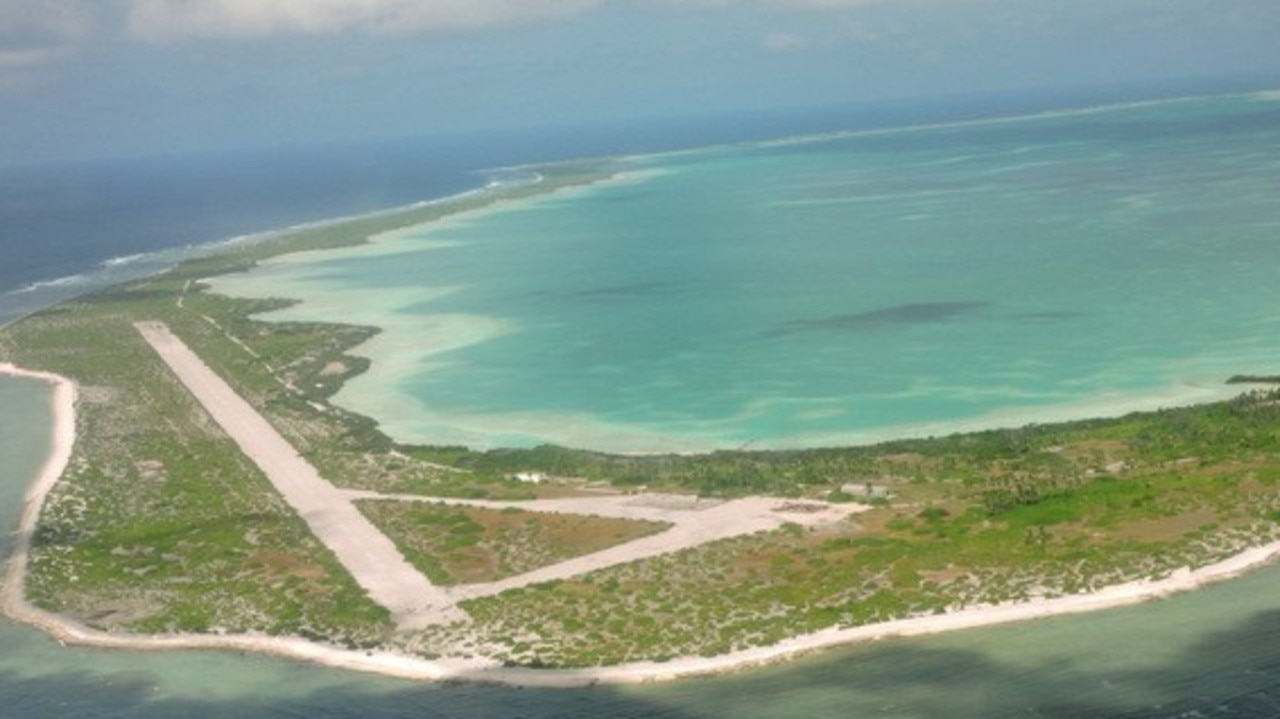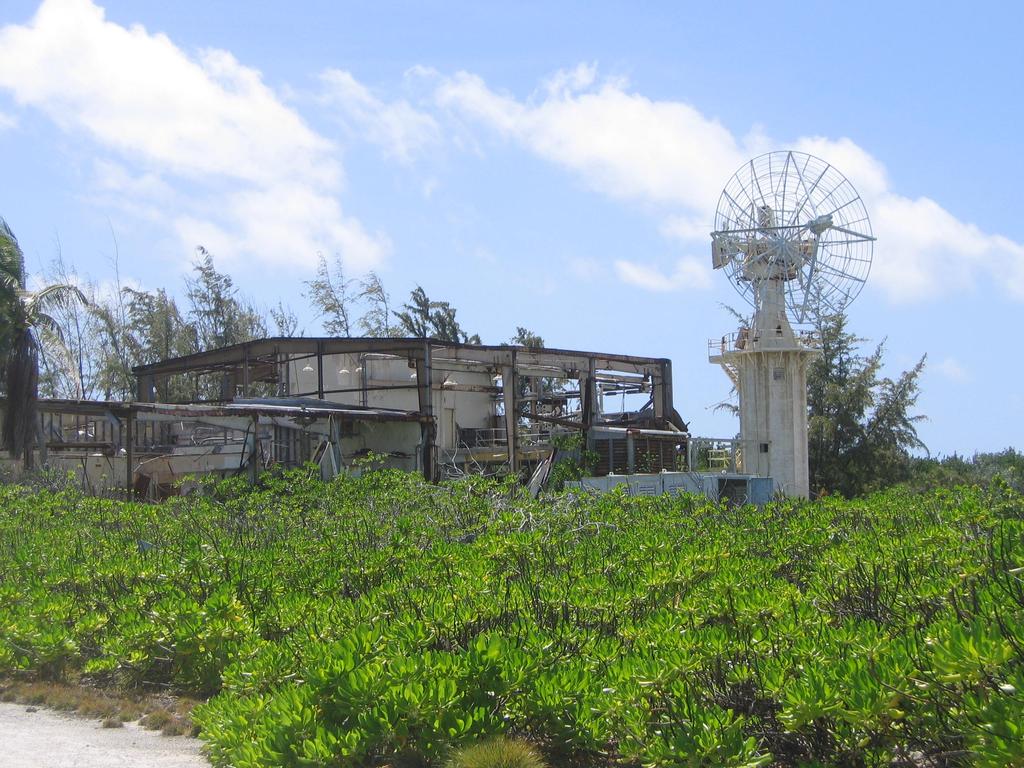How an abandoned runway atoll will spark a Pacific arms race
China’s slow Pacific creep has moved a concerning step forward. Experts warn it “threatens to bring a new Cold War at best and a world war at worst”.
A dilapidated runway on a coral atoll in the middle of the Pacific Ocean between Australia and America doesn’t look like it could symbolise the geopolitical significance of the region.
But that was before Beijing decided it wanted it, in a posture that could not only see the Pacific region boom with investments and infrastructure but leave it with the greatest military arms race and instability in a generation.
Brazen acts like a Chinese fighter intercepting an RAAF surveillance aircraft in international airspace last weekend is a worry but Defence analysts in Canberra say the broader concern is Beijing’s equally as brazen move on the South Pacific.
Last week Beijing failed in its bid to get Pacific nations to sign up to its hastily-delivered, multilateral security and economic pact.

Fresh from signing the Solomon Islands into a security pact, Beijing thought an eight-country, 10-day tour of the Pacific by Foreign Minister Wang Yi would see other nations sign a broader alliance that would give China unprecedented regional access.
It didn’t but it now emerges it did make smaller deals that could well lead to the same influence and control outcome, starting with the strategic atoll airstrip.
During World War II, the United States Navy built the airstrip on the tiny island of Kanton, a coral atoll in the Kiribati archipelago located between the US mainland and Asia.
Back then it served as a staging post for allied forces to conduct attacks on Japanese troops as they advanced through the Pacific, and as a stopover point for military flights between the US and Australia.

Such was its strategic importance back then, the almost 2km-long runway designed for long-range bombers was fortified by more than 1200 troops. But it was largely abandoned and ignored, no less by the 20 inhabitants of the atoll today.
But China has offered to bring the runway and a causeway back to life with an upgrade ostensibly for civilian use under a deal between Beijing and Kiribati capital, Tarawa.

Together with the Solomon Islands deal and another with Vanuatu, it is what Australian intelligence fears is the start of a military foothold for a chain, one link (nation) at a time.
“You only have to look at a map to deduce the basic logic of what China is up to,” senior fellow with the International Institute for Strategic Studies in Singapore Euan Graham said.
“This is prime real estate. Most of it is water, but if you connect up those islands, archipelagos, that’s an island chain that runs between Australia and the United States, between Australia and Japan.”
Such an interconnectivity could allow China a better ability to delay US warships from moving in the region and disrupt supply lines if and when conflict erupts, most likely over Taiwan.
Mr Graham said the rushed timing now could have been to catch the newly elected Prime Minister Anthony Albanese off guard, with Beijing viewing Australia as a functionary of its arch rival America.

UNSW Canberra senior lecturer and China expert at the Australian Defence Force Academy (ADFA) Dr Pichamon Yeophantong said China’s foreign policy is well known for its incrementalism, a tendency to build block by block deals.
She said China’s expanding bilateral partnerships cannot be dismissed and were part of China’s strategy to boost its sphere of influence and access to resources and strategic advantage.
She said China’s end game was not that different from that of other countries wanting regional security but was likely to lead to an arms race.
The US has recently poured investment into bases at Guam and Palau while Australia is investing in modernising military infrastructure in PNG, notably at Lombrum base on Los Negros Island, and Fiji and has a new security pact with the US and UK to deliver nuclear-powered submarines.

“That is the concern with Pacific island countries,” she said. “They are not fond of militarising the region and, with AUKUS, there is a fear of nuclearisation and what that could give rise to if there is an arms race … having heard from contacts in the Pacific, militarisation of the region is of concern and that is why we see hedging behaviour from countries when it comes to them having to make a choice between China or Australia and the US.”
China has signalled it would target the Solomon Islands, Kiribati, Samoa, Fiji, Tonga, Vanuatu, Papua New Guinea and Timor-Leste as well as the Cook Islands, Niue and Micronesia to train Pacific police officers for joint “traditional and non-traditional security” operations.
It also wants to develop a marine plan for commercial fisheries, establish a free-trade agreement and dispatch hundreds of consultants, teachers and medical staff to work locally.
Micronesia president David Panuelo said the situation “threatens to bring a new Cold War at best and a world war at worst”.
“Aside from the impacts on our sovereignty … it increases the chances of China getting into conflict with Australia, Japan, the United States and New Zealand on the day when Beijing decides to invade Taiwan,” he wrote in a letter to regional counterparts.




